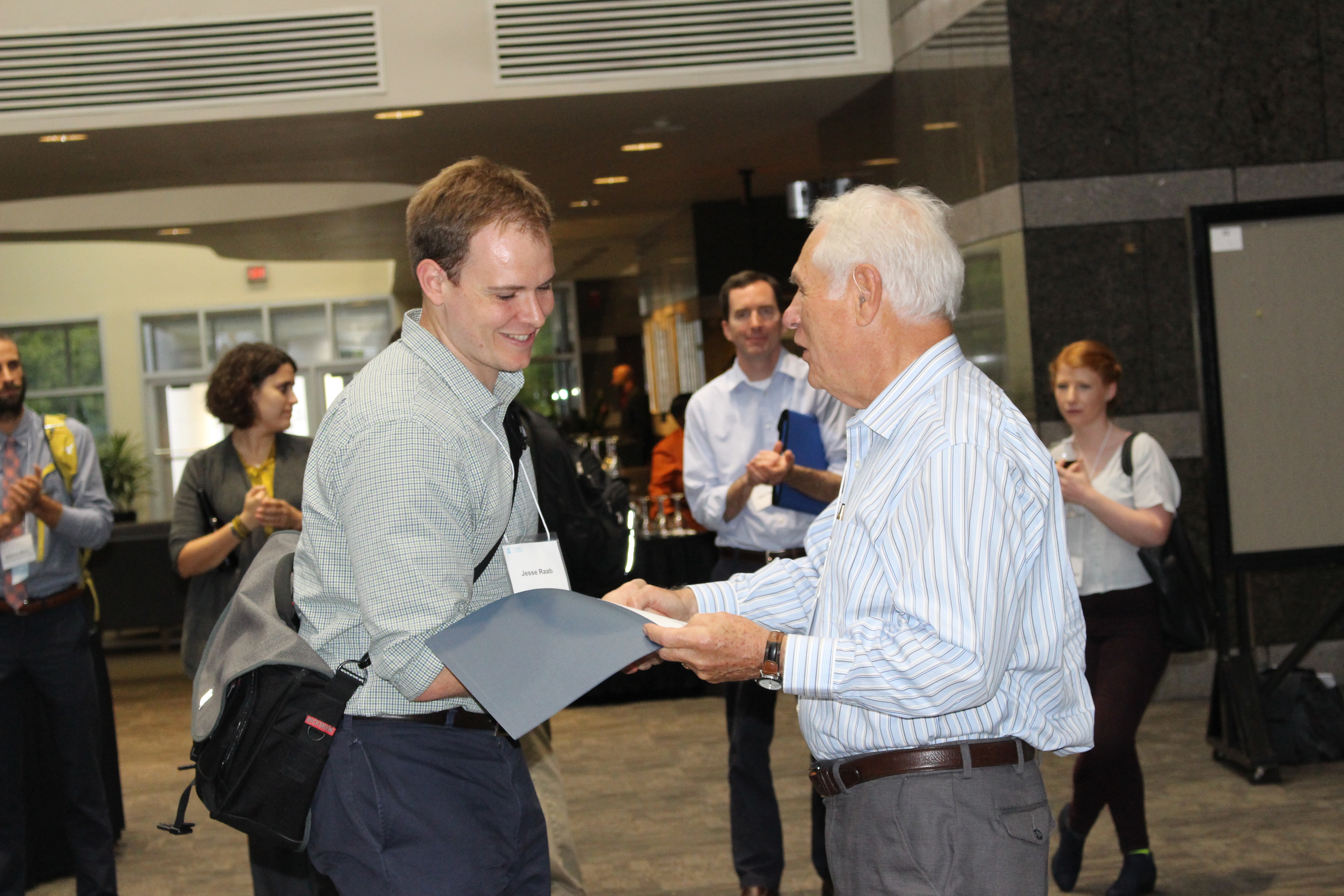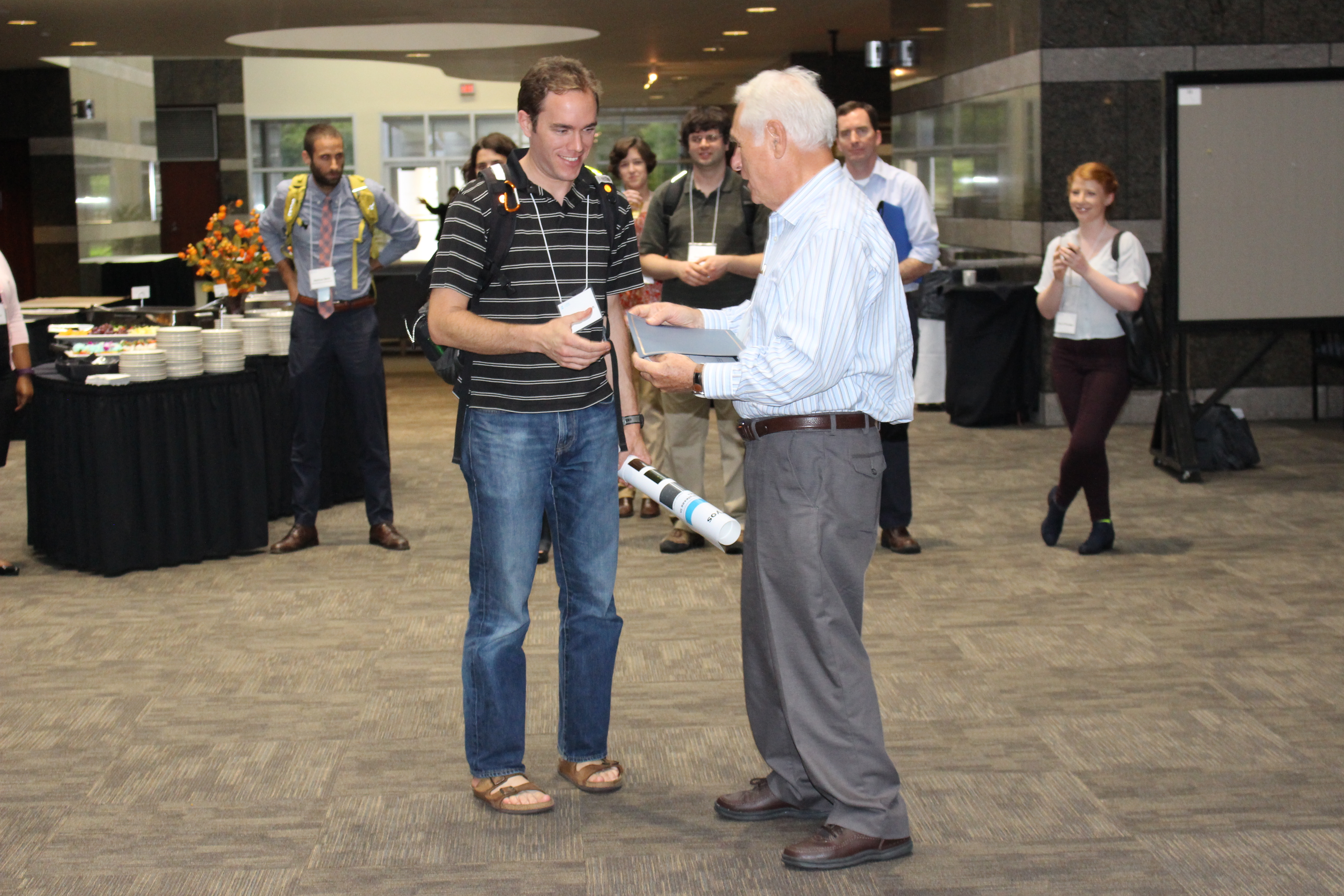The 40th annual Postdoc-Faculty Research Day drew approximately 150 people to the William & Ida Friday Center for Continuing Education on Sept. 30 for spoken presentations and a poster session by UNC Lineberger postdoctoral fellows.


UNC Lineberger Comprehensive Cancer Center postdoctoral researchers presented their latest research findings at Postdoc-Faculty Research Day on Sept. 30, showcasing efforts to fight cancer drug resistance and to study early cell development.
The annual event drew approximately 150 people to the William & Ida Friday Center for Continuing Education for spoken presentations and a poster session by the center’s postdoctoral fellows. At this year’s event, monetary awards were given for the top three poster presenters, and for the first place and runner-up in the oral presentation competition.
“The Lineberger Postdoctoral Training Grant just completed its 40th year, having trained hundreds of successful scientists over those years — many of whom are in top academic or biotech/pharmaceutical positions,” said Albert Baldwin Jr., Kenan Distinguished Professor and associate director of UNC Lineberger. “The quality of the science this year was of very high and highly relevant to our cancer research mission.”
The center’s Postdoctoral Training Program in Cancer Research was started by Joseph S. Pagano, the founding director of the cancer center, Lineberger Professor of Cancer Research, Professor of Medicine and Microbiology & Immunology, and the longtime director of the training program. He has been a member of the UNC faculty since 1965.
“The high priority placed on training future cancer investigators is marked annually by Postdoc-Faculty Day,” Pagano said. “The Lineberger center and its nationally known Postdoctoral Training Program were started at nearly the same time, and with our many faculty preceptors we are gratified by the success of so many of our trainees over the past 40 years”.
At this year’s event, the award for the top oral presentation was given to Timothy Stuhlmiller, PhD, for research into a drug combination that they used in a pre-clinical study to block drug resistance in HER2-positive breast cancer. The researchers combined a drug that targets the HER2 receptor with a second compound targeting an entirely different type of proteins. This second compound, a BET bromodomain inhibitor, was able to block multiple mechanisms of resistance.
“When you target the HER2 receptor, you get a major response from other signaling proteins within the cell to evade that response, and the cell develops resistance, and there are many different signaling proteins that do this,” Stuhlmiller said. “It’s extremely difficult to target any one of these proteins because they’re so redundant and there are so many of them, and they activate many different pathways. We targeted proteins of the nucleus of the cell to prevent the expression of all these different signaling proteins.”
The award for the top poster presentation went to Daniel J. Dickinson, PhD, for work that revealed a technical advance to help researchers insert foreign genes into a type of nematode worm. For studies of early cell development, the researchers insert sequences of genetic code into the nematode so that they make fluorescent proteins. Those fluorescent proteins allow the scientists to watch the activity of certain proteins in the cell. But Dickinson said this is difficult in this particular organism because of innate mechanisms that the nematode has to shut off foreign genes.
Dickinson said the researchers are interested in using the fluorescent markers for studies of how cells change shape, how they generate and maintain their normal tissue structure, and develop normally.
“This organism is really good at shutting off these tricks that we have for getting foreign DNA expressed,” Dickinson said. “We were able to design computation algorithms that let us optimize our DNA sequences for better expression.”
The award winners were:
Poster presentations
1st – Daniel J. Dickinson, PhD, for the poster “Rational design of protein coding sequences that evade piRNA-mediated germline sequencing.” He is mentored by Bob Goldstein, PhD.
2nd – Jesse R. Raab, PhD, for the poster “Transcriptional regulation mediated by biochemically distinct forms of SWI/SNF.” He is mentored by Terry Magnuson, PhD.
3rd – Matthew P. Walker, PhD, for the poster “FOXP family induced potentiation of Wnt signaling.” He is mentored by Michael B. Major, PhD.
Oral presentations
1st — Timothy Stuhlmiller, PhD, for a presentation of “BET bromodomain inhibition targets adaptive responses to lapatinib in HER2-positive breast cancer.” He is mentored by Gary L. Johnson, PhD.
Runner-up — David Courson, PhD, for a presentation of “Myosin X Reveals Dynamics and Function of Basal Filopodia.” He is mentored by Richard Cheney, PhD.
